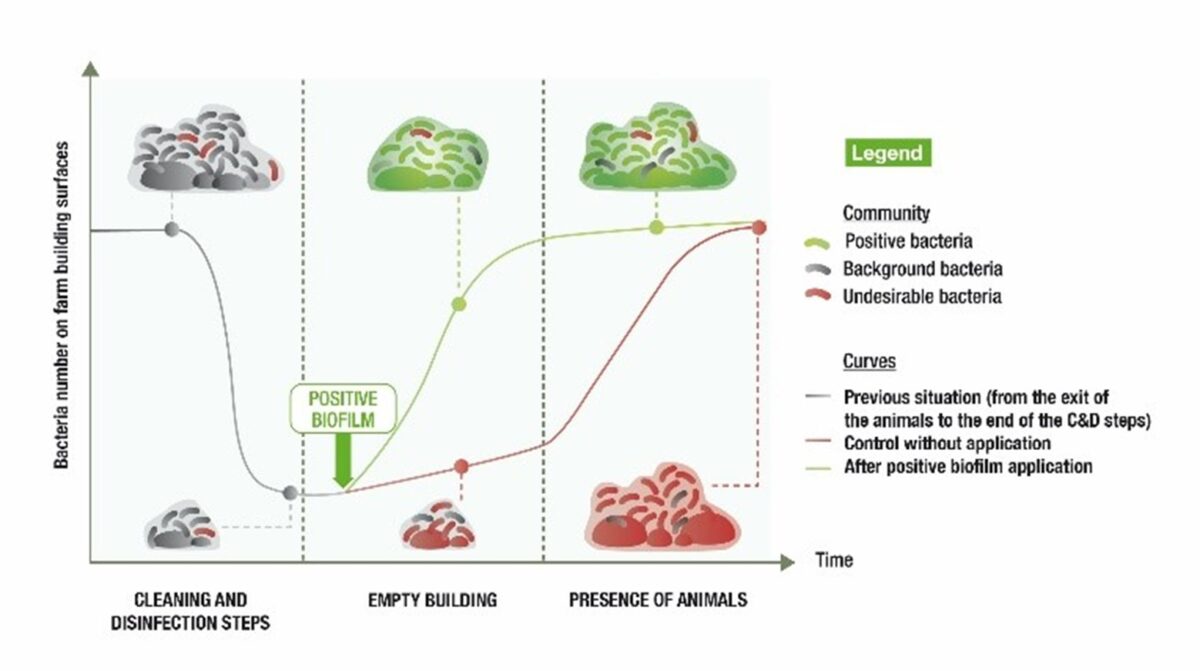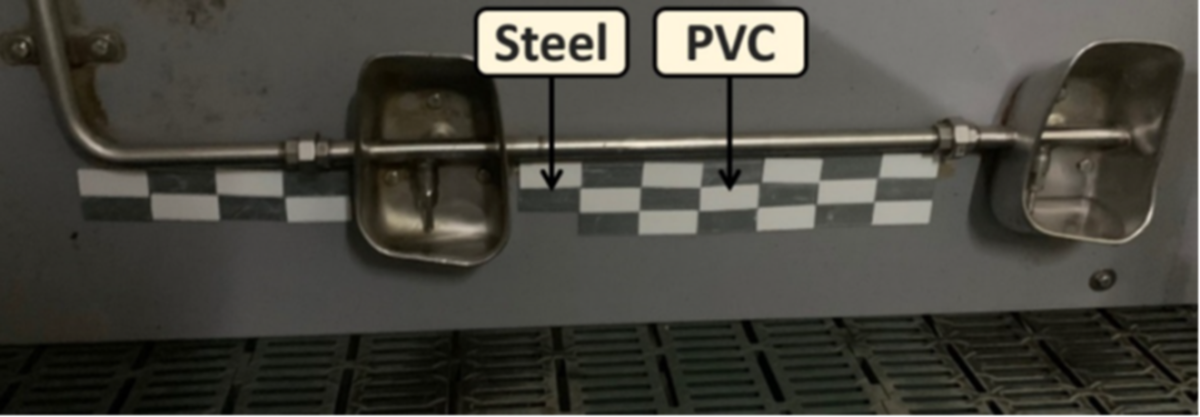Blog | Reading Time 4 minutes
Expert interview: Virgile Guéneau on positive biofilms and their importance in farm buildings
Virgile Guéneau, Research Scientist – Biofilms at Lallemand and INRAe (France)
What are biofilms?
It is a way of life for bacteria! Biofilms are spatially organized microbial communities with emerging properties in comparison to the free-floating form. Microorganisms inside the biofilm are embedded in a self-produced matrix that gives a three-dimensional structure to the population. For example, this structure leads to the appearance of gradients making the microorganisms living deep in the biofilm more tolerant to environmental fluctuations, such as the application of antibiotics or biocides. It is essential to study biofilms because most bacteria on earth are organized in biofilm form, and they are everywhere.
How are biofilms important in animal farm buildings?
Any farm building or feeding equipment surface hosts biofilms. It is described in the literature that biofilms can be a reservoir of undesirable bacteria on livestock building surfaces.
To eliminate these undesirable bacteria, including potential pathogens, cleaning and disinfection (C&D) procedures are applied between two batches of animals. However, some pathogenic bacteria in a biofilm form can be 10 to 1,000 times more resistant to antimicrobials or disinfectants compared to isolated bacteria and may contaminate animals in the next batch.
The classical C&D procedures can leave some sort of “empty spaces,” allowing fast-growing bacteria present in the environment to recolonize the surfaces. This is particularly the case of opportunistic bacteria present in feces, including potential pathogens.
Are biofilms good or bad?
A biofilm can be formed either by undesirable (i.e. negative biofilms) or by beneficial (i.e. positive biofilms) bacteria.
- Most chronic infections in plants, animals, or humans are associated with pathogenic biofilms. It is noteworthy that 60-80% of human microbial nosocomial infections are caused by bacteria biofilms. Some other examples of negative biofilms include dental plaque, biofouling of ship hulls, films inside drinking water pipelines oil forages, etc.
- Biofilms can be positive and used by humans to transform food, as during the manufacturing of cheese for example, or act as bio-preservation agents for plants. Our gut and skin microbiota also contain biofilms.
Can you explain the concept of positive biofilms on farm surfaces?
The concept of positive biofilms on farm surfaces is to modulate the environmental microbiota by adding safe beneficial bacteria after C&D procedures, as well as before animal entry.
This complex will quickly form a positive biofilm, colonizing the surface before the pathogens. These positive bacteria have been selected for their competitiveness and biofilm-forming features, which confer nutritional and spatial competition advantages.
Based on this concept, Lallemand has developed LALFILM PRO, a positive biofilm solution to help maintain safe animal production.
Figure 1. Positive biofilms concept
How can we study biofilms in farm buildings?
Most of the techniques used to study microbial communities attached to the surface of farm buildings disrupt the biofilms. However, we know that the structure of the biofilm is very important as it can be involved in their tolerance.
To solve this problem, we have developed a specific methodology based on coupon sampling to study environmental biofilm without damage.
Coupons (surfaces of a specific material where the biofilm can develop) were placed on farm surfaces after classic C&D procedures. They were attached with double-sided tape under water lines close to animals. Several sampling time points with replicates were done during the batch, and coupons were removed aseptically and brought to the lab to be analyzed by metagenomics (Guéneau, V; Rodiles, A. et al., 2022). This method allows us to study the 3D structure of biofilm, the number of bacteria inside the community, and the diversity of species over time without disrupting the biofilms.
Figure 2. Arrangement of coupons on the wall. Steel and PVC coupons were placed on the walls under the water lines using double-sided tape in a staggered arrangement.
What are the main objectives of your research project within Lallemand?
The first objective is to increase knowledge and awareness about natural biofilms and the positive biofilm concept in farm building.
The second is to better understand the modes of action of positive biofilms to define innovative in vitro models. These models will allow us to select new bacterial candidates and combine them rationally to form the most effective positive biofilm on farm building surfaces.
LALFILM PRO is a water-dispersible powder containing a specific blend of highly concentrated live bacteria. After cleaning and disinfection, it helps install a positive biofilm on farm building surfaces.
Published Oct 2, 2023 | Updated Oct 3, 2023
Related articles
Need specific information?
Talk to an expert
